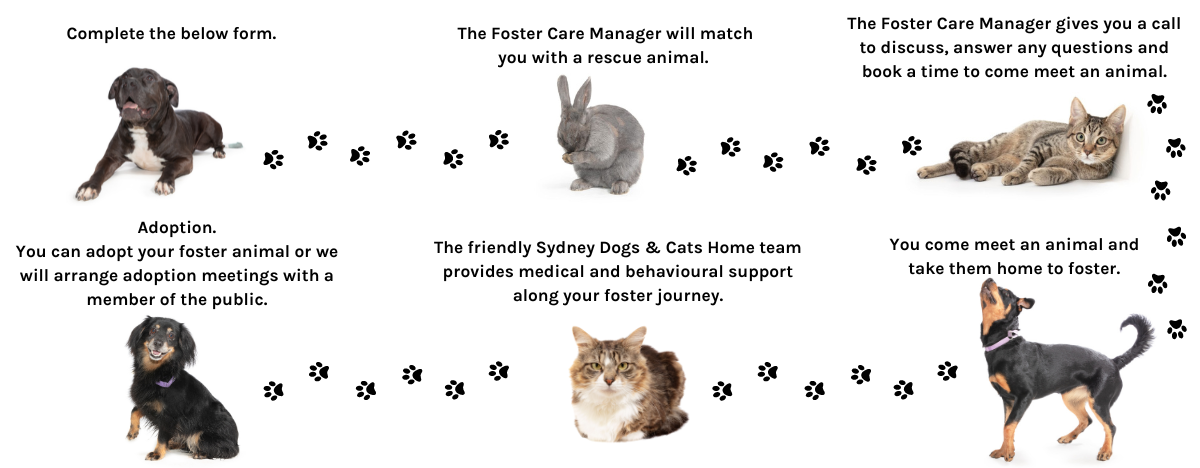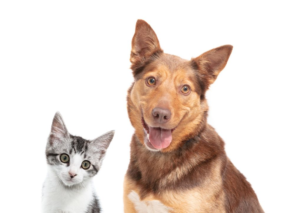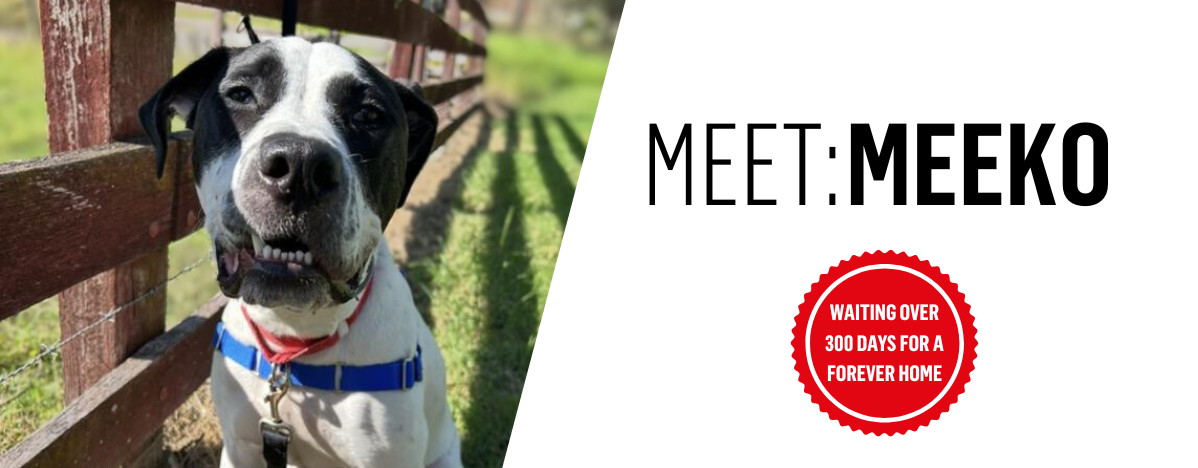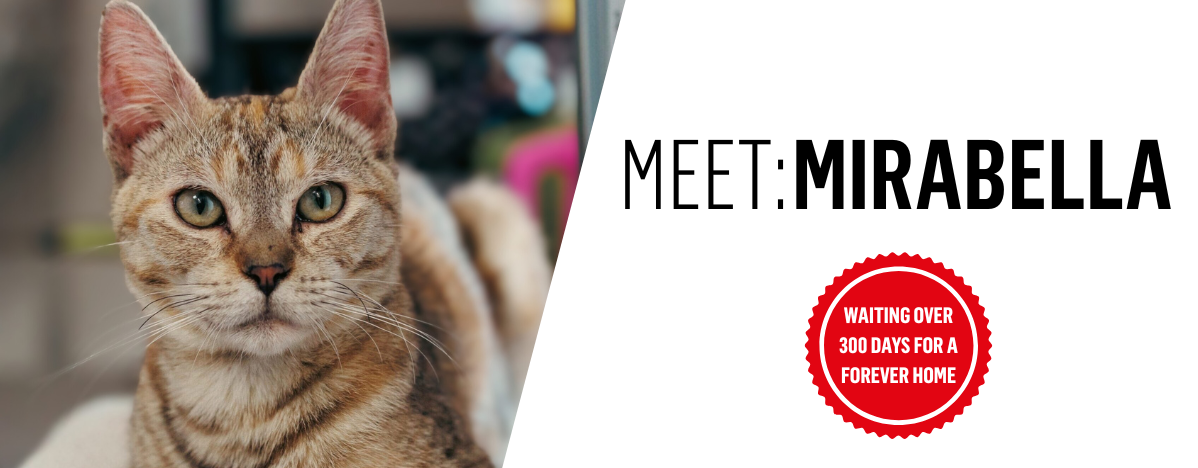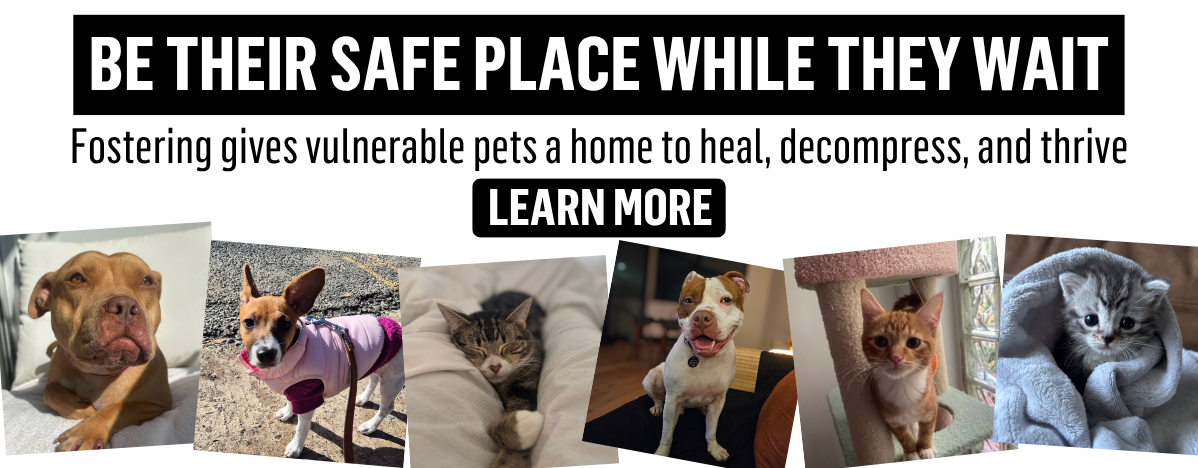BLOG
Adoption Success Story: Herbie
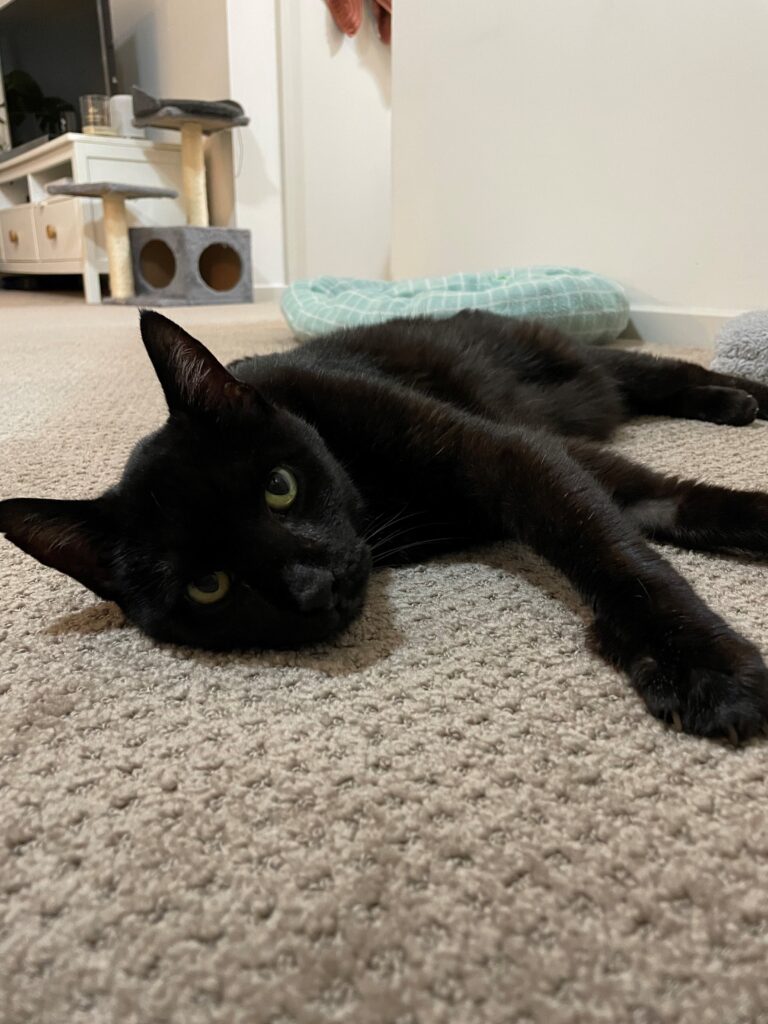 Herbie the cat (formerly known as Kawaii), is a feline with a striking panther-like appearance that immediately catches your attention. However, his sweet and affectionate nature is what truly captures your heart. Herbie found himself at Sydney Dogs & Cats Home in November of last year. He required an extended stay to receive treatment for dental disease and address his hyperthyroidism. Once he made a recovery from surgery and his hyperthyroidism was improving, Herbie embarked on his journey to find his forever home.
Herbie the cat (formerly known as Kawaii), is a feline with a striking panther-like appearance that immediately catches your attention. However, his sweet and affectionate nature is what truly captures your heart. Herbie found himself at Sydney Dogs & Cats Home in November of last year. He required an extended stay to receive treatment for dental disease and address his hyperthyroidism. Once he made a recovery from surgery and his hyperthyroidism was improving, Herbie embarked on his journey to find his forever home.
At the age of 10, the shelter environment was far from ideal for this cat who longed for sunny spots, playful toys, and the warm companionship of a human family. Fortunately, Herbie’s wait for a loving family didn’t last long. In late March, Ella and her family stepped forward and welcomed him into their lives with open arms. The adoption was a perfect fit, especially since they already had another 10-year-old black cat named Gary.
From the moment Herbie joined the family, he and Ella formed a strong bond. Herbie seems to be Ella’s constant companion, following her wherever she goes in the house. Even while Ella works from home, he finds comfort in his cat bed beneath her desk, complete with a cosy heat pack during the winter months.
Living a life of luxury like any cat deserves, Herbie even spends every night sleeping in the human bed with his cat sibling Gary. Apart from looking like a panther, Herbie also has some human tendencies and tucks himself into bed under the blankets and rests his little head on the pillow.
Ella happily reports that Herbie’s presence has had a positive impact on Gary, making him a happier cat. With his funny, cuddly, and chatty personality, Herbie has become an adored member of the family. Ella and her family can’t help but adore him and express how much they love him.
With his panther-like allure and endearing nature, Herbie has found his place in a loving home, making it clear that he was meant to be there all along.
A Haven for Lost and Abandoned Pets
Since its establishment in 1946, Sydney Dogs & Cats Home has been a beacon of hope for Sydney’s lost, abandoned, and neglected pets. Our mission is simple: to provide shelter, nourishment, veterinary care, and an abundance of love to animals in need, with a primary focus on dogs and cats. Whether we reunite them with their owners or help them find new loving homes, our ultimate goal is to bring pets and people together.
As Sydney’s sole charity pound and community facility, we open our doors to thousands of pets each year, extending our services across multiple council areas and servicing over a million Sydneysiders. We proudly support the Getting to Zero movement, which means that we don’t place a time limit on any healthy and treatable animal that enters our care.
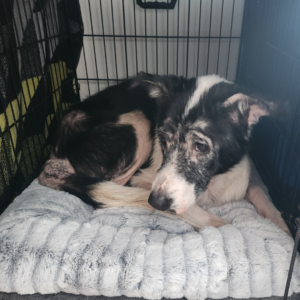 Every day, we see animals with varying levels of need. Some simply require a warm bed and nourishing food to regain their strength and grow, while others need extensive medical intervention. One such case was Alexis, an 8-year-old Border Collie who arrived at our facility in an appalling state. Infested with fleas, plagued by infected and inflamed skin, and suffering from severe itching that resulted in substantial fur loss, Alexis was also severely underweight and extremely fearful. In a heart-wrenching discovery, council rangers found her tied up in a backyard helpless and desperate for treatment, care and love. We can only imagine how long she had suffered in this state.
Every day, we see animals with varying levels of need. Some simply require a warm bed and nourishing food to regain their strength and grow, while others need extensive medical intervention. One such case was Alexis, an 8-year-old Border Collie who arrived at our facility in an appalling state. Infested with fleas, plagued by infected and inflamed skin, and suffering from severe itching that resulted in substantial fur loss, Alexis was also severely underweight and extremely fearful. In a heart-wrenching discovery, council rangers found her tied up in a backyard helpless and desperate for treatment, care and love. We can only imagine how long she had suffered in this state.
As soon as Alexis entered our care, our dedicated team of veterinarians promptly assessed Alexis’s condition and gave her appropriate medication to address her skin issues. Additionally, we provided her with supplements and nutritious food to help her reach a healthy weight for her breed. But soon it became apparent that what Alexis needed most was love and care. That’s when Annie, one of our exceptional foster carers, stepped in and offered Alexis a safe haven.
Annie dedicated the first four days to helping Alexis feel secure and loved. Despite initial challenges, such as Alexis’s refusal to eat or take her medication due to fear, Annie tirelessly experimented with a variety of dog-safe foods, from chicken to lamb chops, and ultimately found success with soup. She spent countless hours outside Alexis’s crate, showing her that she was safe and loved. Gradually, Alexis began to trust and feel more confident, eventually emerging from her safe space and blossoming into an entirely transformed dog.
Nowadays, Alexis loves her daily walks, eagerly stretching her legs and exploring the neighbourhood and all it has to offer. With a new zest for life, she zigzags around, joyfully sniffing every new scent she encounters, and spends the rest of her days peacefully dozing. Alexis has undergone an incredible change, evolving from a timid and frightened dog into a playful, sassy, and affectionate companion.
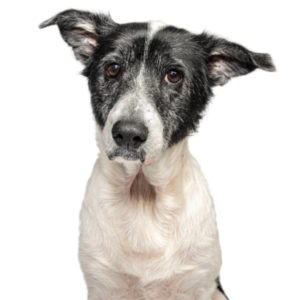 Our passion for our work is unwavering, but we cannot achieve our goals alone. Providing care for pets in need requires substantial resources, including daily essentials like food, bedding, treats, and toys, as well as funding for vital medications, surgeries, and training. In addition, we are also battling with the challenges of the rising cost of living prices and keeping two temporary facilities operating while we wait for the promised funding from the NSW Government. Paying for essentials such as utilities and rent has added pressure to already sensitive circumstances.
Our passion for our work is unwavering, but we cannot achieve our goals alone. Providing care for pets in need requires substantial resources, including daily essentials like food, bedding, treats, and toys, as well as funding for vital medications, surgeries, and training. In addition, we are also battling with the challenges of the rising cost of living prices and keeping two temporary facilities operating while we wait for the promised funding from the NSW Government. Paying for essentials such as utilities and rent has added pressure to already sensitive circumstances.
Your support can make a tremendous difference in the lives of our animals and wider organisation to continue to allow us to do the important work we do. We invite you to consider making a tax-deductible donation by clicking here. Every contribution, big or small, helps us continue our mission of providing second chances and bright futures for pets like Alexis.
Together, let’s make a positive impact on the lives of Sydney’s cherished companions. Join us in creating a world where every pet is given the love, care, and forever home they deserve.
Published 2nd June 2023
WHS Incident Report
How Does Foster Care Work?
Anyone can foster as long as you are 18 years old or over, live in metropolitan Sydney and have access to your own transport.
You can foster cats, dogs, rabbits or guinea pigs! We provide everything you need and you provide the love.
Simply complete this short form and then we’ll give you a call to discuss.
READY TO BECOME A FOSTER CARER?
If you are ready to make a difference in a rescue animal’s life, then don’t delay!
VOLUNTEERING FAQ
Volunteering with animals is an exciting and rewarding experience and we know you are eager to get started! You may have a lot of questions about what is involved by becoming a volunteer at Sydney Dogs & Cats Home. We have answered your frequently asked questions and compiled some things to consider before becoming a volunteer. If you have further questions, please feel free to email the Volunteer Coordinator at volunteer@sydneydogsandcatshome.org.
WHAT DOES IT MEAN TO BE ON OUR VOLUNTEER TEAM?
Our volunteers play a huge part in looking after the animals in our care and demonstrate commitment, empathy, and drive. Volunteering is both fun and rewarding!
As a kennel hand/cattery volunteer, almost all tasks are shared across staff and volunteers, except for ‘staff only’ tasks. From cleaning to dog walking and kitty cuddles, we share it all!
WHAT TYPES OF VOLUNTEERING CAN YOU GET INVOLVED IN?
- Kennel hand/cattery assistant
- Reception and administration duties
- Community events and programs
- Foster caring (if you are interested in becoming a foster carer, please also fill out the foster carer form)
- Animal transport
- Adhoc projects (such as IT, handy-work etc)
IMPOUND FACILITY
Sydney Dogs & Cats Home is Sydney’s only charity impounding facility, as well as being an animal rehoming shelter. You may encounter some potentially confronting animal welfare situations at our shelter. Please consider the emotional aspect of working in an environment such as this, before committing to a volunteer position.
STUDENT PLACEMENTS
We regularly offer student placements at our kennels in Austral. This is suitable for anyone completing TAFE Animal Studies certificates or anyone doing university courses in animal care/veterinary sciences. Placements may be negotiated as 5–10-day blocks or extended ongoing weekly or fortnightly shifts.
Once you have completed an Expression of Interest, please contact the Volunteer Coordinator if you require any further information about a possible placement opportunity.
COMMITMENT
We ask all volunteers to commit to the shifts/events or tasks they have agreed to, communicating any changes or cancellations in advance
Our kennel/cattery volunteers are asked to commit to at least one shift per fortnight for a period of 4 months. This ensures that volunteers gain the necessary skills to become trusted members of our team and are able to provide the best care for our residents. More shifts are possible, depending on availability as well as the capability of an individual to perform tasks in a fast-paced environment.
We have a regular weekly roster for Volunteer Animal Care and Reception assistants. The kennel shifts are 8.30am to 12.30pm and 12.30pm to 4.30pm, while the cattery shifts are 8.30am-12noon. Reception shifts are 10am-3pm. One-off events and ad hoc projects are arranged as they happen.
YOUR CONTACT INFORMATION
Sydney Dogs & Cats Home regards the security of personal information as a priority and will endeavour to protect it at all times. You may request access to your personal information held by Sydney Dogs & Cats Home at any time by contacting the Home on (02) 9587 9611. We will add your name and contact details to our database, and we communicate with volunteers via email and a closed volunteer Facebook page/Whatsapp group.
STEPS TO BECOMING A VOLUNTEER
- Complete an Expression of Interest Form.
- Your form will be matched against our shelter’s needs relevant to availability and commitment. Not everyone will match our needs – we thank you in advance for your patience, as our volunteer coordinator works through the logistics.
- Within 1-4 weeks of your application, if your form is matched, you’ll be asked if you’re still available and invited to attend a 4-hour induction (a trial shift). This shift includes an information session with details on our history and future plans, who we are and what we do.
- During your induction, we work through several of the most common tasks to give you a good feel for a volunteer shift. This may include cleaning, animal enrichment time, covering relevant policies and procedures, general house rules and WHS (Work, Health & Safety) requirements.
- If successful, including that you enjoy your trial shift, we sign you up as a volunteer or student placement. We ask you to confirm your availability for future shifts and contribute $30 to cover the cost of a volunteer t-shirt.
- Before commencing your first shift, you will need to read our Volunteer Manual, sign all relevant pages, sign a Volunteer Agreement and provide (to sight) a photo ID.
We are deeply grateful for the support of our Volunteers and applicants. Please be aware it may take us up to 4 weeks to respond to your volunteer application for the first round. After that time, we may reach out to you again within 4-12 weeks to see if you’re still interested and available.
We appreciate your patience and encourage you to get in touch with other local animal rescue groups to enquire about volunteer opportunities.
Ready to become a volunteer?
Bright Future for Bailey
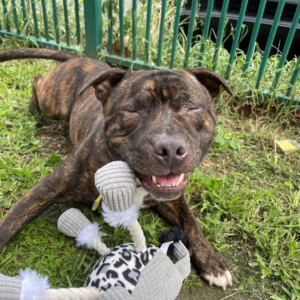 Beautiful Bailey is the sweetest and happiest boy and it’s hard to believe he found himself in a shelter. While Bailey has such a large smile and happy personality, the first thing that stood out about Bailey when he walked through the doors of the Home was that you could barely see his eyes. Bailey was suffering from double entropion. This occurs when the eyelid rolls inwards, and the eyelashes irritate the eyes. Imagine having sand in your eyes all the time, this is the feeling that poor Bailey had been experiencing. His level of pain and uncomfortableness that was so bad, he chose not to open his eye.
Beautiful Bailey is the sweetest and happiest boy and it’s hard to believe he found himself in a shelter. While Bailey has such a large smile and happy personality, the first thing that stood out about Bailey when he walked through the doors of the Home was that you could barely see his eyes. Bailey was suffering from double entropion. This occurs when the eyelid rolls inwards, and the eyelashes irritate the eyes. Imagine having sand in your eyes all the time, this is the feeling that poor Bailey had been experiencing. His level of pain and uncomfortableness that was so bad, he chose not to open his eye.
Bailey underwent a delicate and life-changing surgery to correct the entropion and make him a lot more comfortable and pain-free. He has recovered well and is enjoying seeing much more clearly and without pain and has shown more of his happy personality. Bailey had spent his time in the Home being a customer care mascot, keeping our customer care team company in reception and greeting any visitors to the Home and has enjoyed some time in foster care.
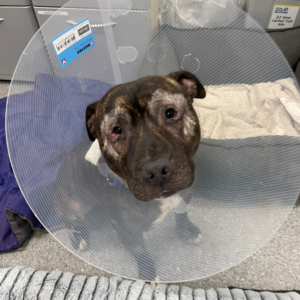 He recently had his final checkup with our vet team who are happy with how well his eyes have healed!
He recently had his final checkup with our vet team who are happy with how well his eyes have healed!
It is no surprise that Bailey has found his forever home so quickly after recovering from surgery! With such a kind nature and happy personality, Bailey recently went to a forever home where he will get to play and be spoilt by 4 human siblings!
Congratulations Bailey! Here’s to looking to your bright and clear future!
Foster Carer Tips & Tricks
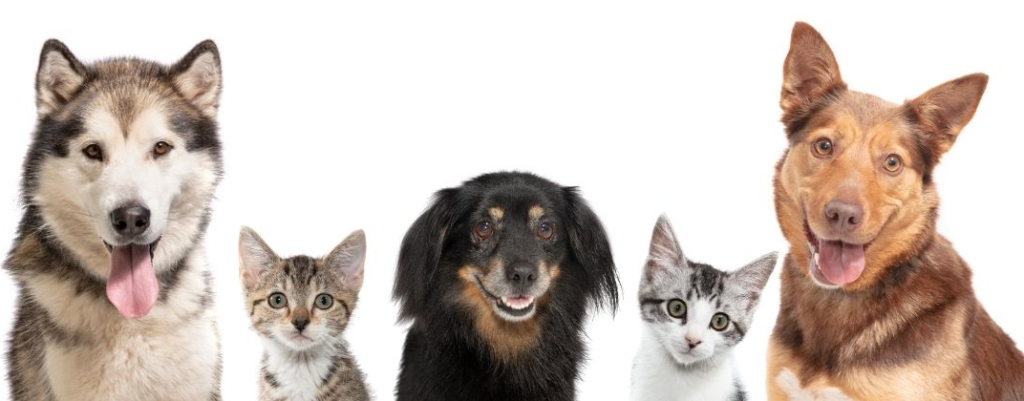
Foster Carer FAQ
How can I apply or enquire about fostering?
Easy. Just complete the Foster Sign-Up Form HERE.
What is provided when fostering?
We provide you with most of the equipment (except food bowls and litter trays) needed to care for your foster pet.
How long do people foster an animal?
That totally depends on the animal and their situation. Some are short (eg. 2 weeks) others are longer (eg. 4 months). We will discuss this with you after you complete the Foster Sign-Up Form HERE.
Who can become a foster carer?
Everyone! Well almost everyone. You do need to be 18 years or older and live in metropolitan Sydney. We also ask that you have a car so that you can transport the foster animal in case of an emergency.
What if I want to adopt my foster animal?
Go for it!!! We love to see our foster carers adopt. Let the friendly staff at Sydney Dogs & Cats Home know you’d like to adopt ASAP. We can then make sure the animal is removed from our website and begin the adoption process with you!
Can I foster if I already have another animal at home?
Definitely. We have many social animals coming through our door that would love a foster sibling.
Can I foster if I have children?
Sure. Kids can be great foster assistants. When we match you with a foster animal, we will ensure that the animal is child-friendly.
Can I foster a dog if I live in an apartment?
Yes. Many dogs live happy lives in apartments. We will match you with a foster dog who we think would enjoy that environment.
Can I foster just for a few weeks?
Yes. We have many different animals in different situations. Some may just need a couple of weeks in foster.
Where do I need to take my foster animal for medical appointments?
Our vet clinic is based in Strathfield South.
Foster Carer Highlight: Monica
Why foster a rescue animal?
There are so many reasons to consider welcoming a rescue animal into your home. Perhaps you can’t commit long-term to an animal but want the companionship that only a pet can bring, maybe you want to help free up some space at the already at-capacity shelters in your area and give a rescue animal an environment they can decompress and relax in.
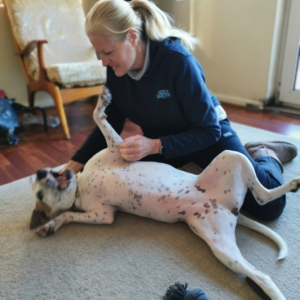 For Monica, there are many rewarding sides to being a foster carer. Monica and her husband have been fostering for close to 3 years at Sydney Dogs & Cats Home as well as volunteering her time around the shelter. While animal shelters aren’t always a great environment for an animal to be in, Monica notes that without them, many animals could end up on the street or on death row. “We took rescue animals on because the shelter environment can sometimes be a detriment to them, but you don’t give up.”
For Monica, there are many rewarding sides to being a foster carer. Monica and her husband have been fostering for close to 3 years at Sydney Dogs & Cats Home as well as volunteering her time around the shelter. While animal shelters aren’t always a great environment for an animal to be in, Monica notes that without them, many animals could end up on the street or on death row. “We took rescue animals on because the shelter environment can sometimes be a detriment to them, but you don’t give up.”
For Monica, being a foster carer has its rewarding sides such as seeing pets who are often frightened, stressed and nervous or lacking training, bloom into wonderful family pets. She says, giving pets the opportunity to learn, who may have come from less-than-ideal circumstances is a challenge she is willing to take on.
Monica has been fostering Alice the cattle dog, the Home’s current longest resident. Alice has come leaps and bounds from the young dog who came into this world during a global pandemic and didn’t receive the training, socialisation and enrichment she needed to become the best dog she could be. But Monica and her husband opened their home to Alice and have committed to guiding her and standing by her until she finds her forever home.
Monica says, “The reward is witnessing their transformation while they are with you. Then you get a call saying someone wants to adopt them. It’s time to say goodbye but knowing that you have prepared them for their new home is rewarding.”
It is because of our wonderful foster carers like Monica that many of our pets go on to find their forever homes and go on to live their best lives! We couldn’t do what we do without them!
Volunteer Spotlight: Jayne
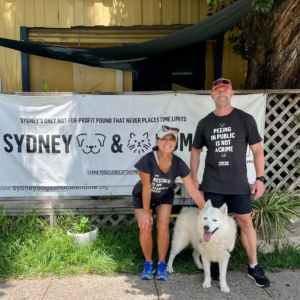 Jayne first became involved in volunteering at Sydney Dogs & Cats Home when she developed a special bond with her neighbour’s rescue dog named Bomba. Through her special connection with Bomba, Jayne learnt about animal rescue organisations and felt compelled to be involved in helping animals in need.
Jayne first became involved in volunteering at Sydney Dogs & Cats Home when she developed a special bond with her neighbour’s rescue dog named Bomba. Through her special connection with Bomba, Jayne learnt about animal rescue organisations and felt compelled to be involved in helping animals in need.
Jayne recently celebrated 10 years of volunteering at Sydney Dogs & Cats Home and it’s hard to imagine the Home without Jayne and her husband Michael’s involvement each and every week. From cleaning kennels, washing dishes, general cleaning, walking dogs, sitting quietly in the kennels keeping dogs company, helping out at events and fostering, Jayne’s impact has been felt deeply within the organisation.
Jayne says volunteering at Sydney Dogs & Cats Home is a part of who she is. Her dedication for the past 10 years has not only positively impacted the well-being of the animals, but her unwavering commitment and dedication are felt enormously by the staff and other volunteers at the Home. By building a community through volunteering, Jayne has made long-term friendships with the staff, volunteers and some of the Sydney Dogs & Cats Home adopters.
Jayne’s favourite part of volunteering is the feeling she receives. “Volunteering provides a meaningful purpose and also provides me with a sense of contentment and happiness from helping animals in need, assisting the staff and supporting the organisation and most importantly, supporting the community. Because of the level of purpose and meaningfulness, this continues my drive and passion to continue to volunteer, knowing I have contributed towards a positive difference.”
Jayne and Michael have given many animals the much-needed break from shelter life with a furcation, where volunteers can give animals a short-term break from the stresses of shelter life and decompress. With so many years of volunteering under her belt, it is no surprise Jayne has had ‘foster fails’, with 6 foster animals becoming lifelong family members, including 5 kittens and 1 dog.
One of Jayne’s proudest initiatives is developing a community program through her work in the Army. The Army Program provided soldiers who had been injured the opportunity as part of their rehabilitation to visit the shelter, spend time with the animals and complete tasks around the shelter grounds. The program provided positive psychosocial attributes and provided the soldiers with a sense of purpose by giving back to the community while completing their physical rehabilitation.
Jayne encourages anyone who is thinking of volunteering at Sydney Dogs & Cats Home to go ahead and do it. “It provides a true sense of giving and purpose, especially with a not-for-profit organisation, where you know every little bit contributes to the bigger picture.”
Thank you, Jayne, for all your hard work, dedication and commitment to the animals at Sydney Dogs & Cats Home!
Archives
- February 2025
- January 2025
- August 2024
- July 2024
- June 2024
- April 2024
- February 2024
- January 2024
- October 2023
- September 2023
- August 2023
- June 2023
- March 2023
- February 2023
- January 2023
- December 2022
- November 2022
- October 2022
- September 2022
- June 2022
- May 2022
- March 2022
- February 2022
- December 2021
- November 2021
- October 2021
- September 2021
- July 2021
- April 2021
- March 2021
- February 2021
- January 2021
- December 2020
- November 2020
- October 2020
- September 2020
- August 2020
- June 2020
- May 2020
- April 2020
- January 2020
- November 2019
- October 2019
- September 2019
- August 2019
- July 2019
- June 2019
- May 2019
- March 2019
- January 2019
- November 2018
- October 2018
- September 2018
- August 2018
- July 2018
- June 2018
- May 2018
- April 2018
- February 2018
- January 2018
- December 2017
- November 2017
- October 2017
- September 2017
- August 2017
- May 2017




 MON-SUN:
MON-SUN:
 02 9587 9611
02 9587 9611 INFO@SYDNEYDOGSANDCATSHOME.ORG
INFO@SYDNEYDOGSANDCATSHOME.ORG





